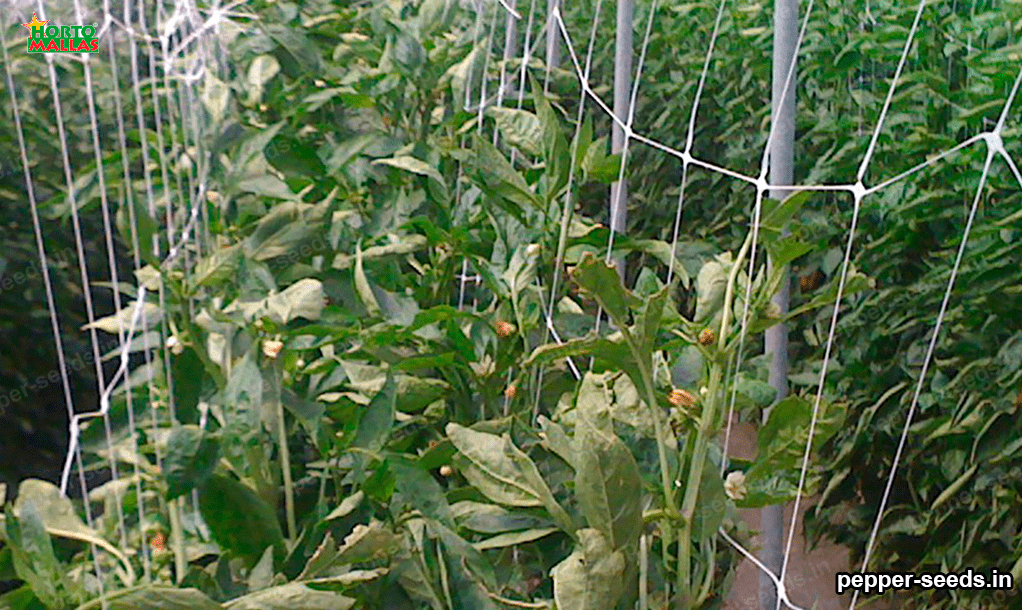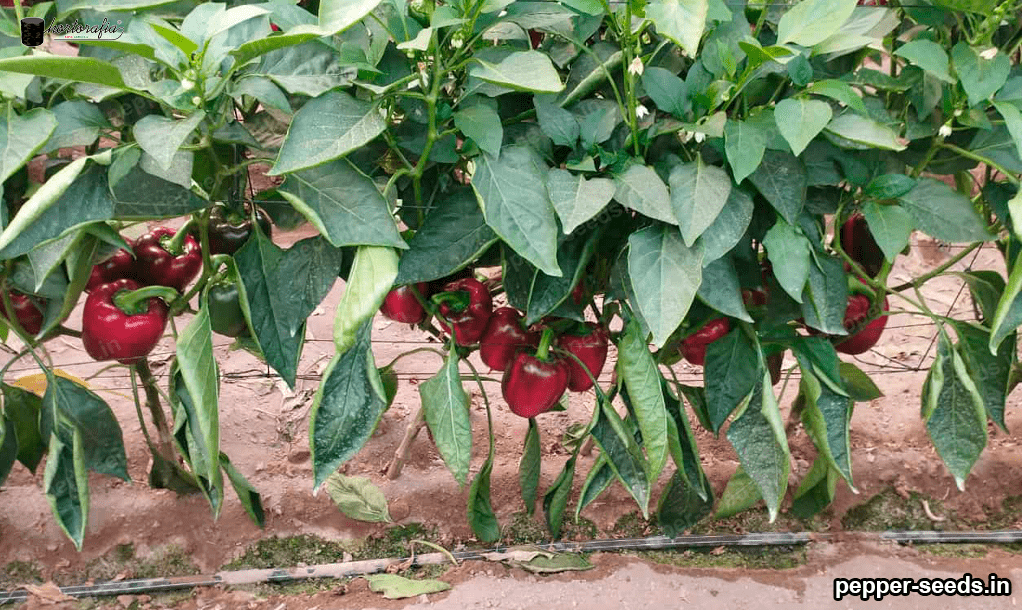Introduction
Trellising netting is essential to the success of the pepper seed crop. And is a key element in ensuring a high quality crop. The trellising netting is a specially designed fabric, usually made from plastic wire or wire. Which is use to provide support for pepper trees and other crops.
This fabric has several qualities that make it ideal for this application. It absorbs moisture, prevents erosion, encourages the development of stronger trees. Reduces the risk of wind damage, improves pepper seed crop production and helps with harvesting. Most pepper growers around the world have adopted trellising to ensure that their crops are of the best possible quality.
The trellising netting offers several advantages for pepper growers. First, the netting helps ensure more uniform production by providing additional protection against erosion, wind, rain and other unfavorable environmental factors. This helps prevent damage caused by the elements and postpones tree aging, which improves crop productivity and quality.

The netting also provides additional support for the trees
Which helps limit tree stretching, reducing the amount of unnecessary dead branches and facilitating fruit harvesting and processing. The netting also improves the quality of the fruit by preventing them from coming into contact with the soil. Which reduces the risk of contamination.
In addition, the netting facilitates the application of pesticides and fertilizers. This prevents liquids from falling on the soil, preventing water and soil contamination. Which helps maintain the quality of the environment.
The trellising net is an essential tool for pepper growers. Its use contributes to maintaining crop quality and maximizing the production of high quality pepper. It improves tree health, reduces the risk of damage and promotes better harvesting and processing. Its use also helps prevent erosion, environmental pollution and soil deterioration. These features make the netting an essential tool for pepper growers looking to get the best results from their business.
Advantages of using trellising netting in pepper seed crop fields
The trellising mesh is one of the latest trends in the cultivation of pepper. Since its use has achieved great benefits for both the producer and the environment. This technology consists of a netting system in which the stems of the plant are grow and supported to support the weight of the ripe fruit. This prevents damage to the fruit, as well as the development of diseases in the stems, while reducing the number of fallen fruit and reducing the impact on the environment. These are just some of the benefits of using netting to protect pepper seed crop fields.
First, one advantage is that the trellising netting contributes to increased crop yields. By supporting ripe fruit, the risk of them falling to the ground before ripening is decrease, and this increases the quantity of fruit harvested. This also contributes to an increase in the quality of the fruit, since it does not come into contact with the ground, thus avoiding damage.
Another advantage is that the use of the netting reduces crop loss due to errors caused by external factors, such as a frost, a hail storm or a strong windstorm. Since the fruits are support by the netting, instead of hanging from the stems, they are more resistant to these phenomena. This increases the chances of a successful harvest.

In addition, the use of netting contributes to the prevention and control of diseases and pests
By attaching the stems to the netting, excessive and disorderly fruit grow is prevent, which facilitates disease and pest control. This is especially useful in areas prone to multiple pest and disease attack, where the use of pesticides may not be the best option.
Using netting to guard pepper seed crop fields also contributes to time savings and cost reduction. Once installed, they require very little maintenance and last a long time. This helps to reduce labor and farm defensives costs, while saving time in harvesting and preparing the fruit for sale.
Using netting to protect pepper seed crop fields is very beneficial to the grower, since it improves yields, prevents losses, facilitates disease and pest control and saves time and costs. It also reduces the impact on the environment, as it prevents fruit from falling to the ground. For all these reasons, this pepper trellising system has quickly become the preferred cultivation system for many growers.
What defects are caused by the lack of trellising netting for a pepper seed crop?
The lack of trellising netting in a pepper seed crop can have some negative effects. This can be the result of a variety of defects. For starters, trees or shrubs can fall under the weight of the bean or fruit. This can damage the plant, impair growth and, in the worst case, cause crop loss. Lack of netting can also reduce the overall health of the plant. For example, insects can more easily jump onto the plant due to the lack of netting. This can lead to diseases, such as stem rot and reduced fruit quality.
In addition, when the plant lacks trellising mesh, its root system becomes more vulnerable. This means the plant has less support to resist wind and the elements. This can lead to lower fruit production and lower fruit quality. Lack of netting can also result in more weeds, which can poison the pepper plant if they are not removed.
In addition, lack of netting in a bell pepper seed crop can result in the loss of essential nutrients from the soil
Plants need the soil to be conserved and not depleted. If there is a lack of netting, erosion can be more prevalent. This can not only be harmful to the soil, but also to the loss of essential plant nutrients.
Lack of netting in a pepper seed crop can be more expensive for the grower. Trellising netting is an essential part of the agricultural landscape and is required to maximize profits. If the support netting is neglected, costs can increase for the grower as more manual labor is required to properly care for the plant.
Lack of mesh for trellising a pepper seed crop can have numerous shortcomings, including tree or shrub fall, disease, loss of essential nutrients, and increased costs to growers. Using netting is crucial to success in pepper production, and growers should take the time to put the best netting systems on their land for best results.
